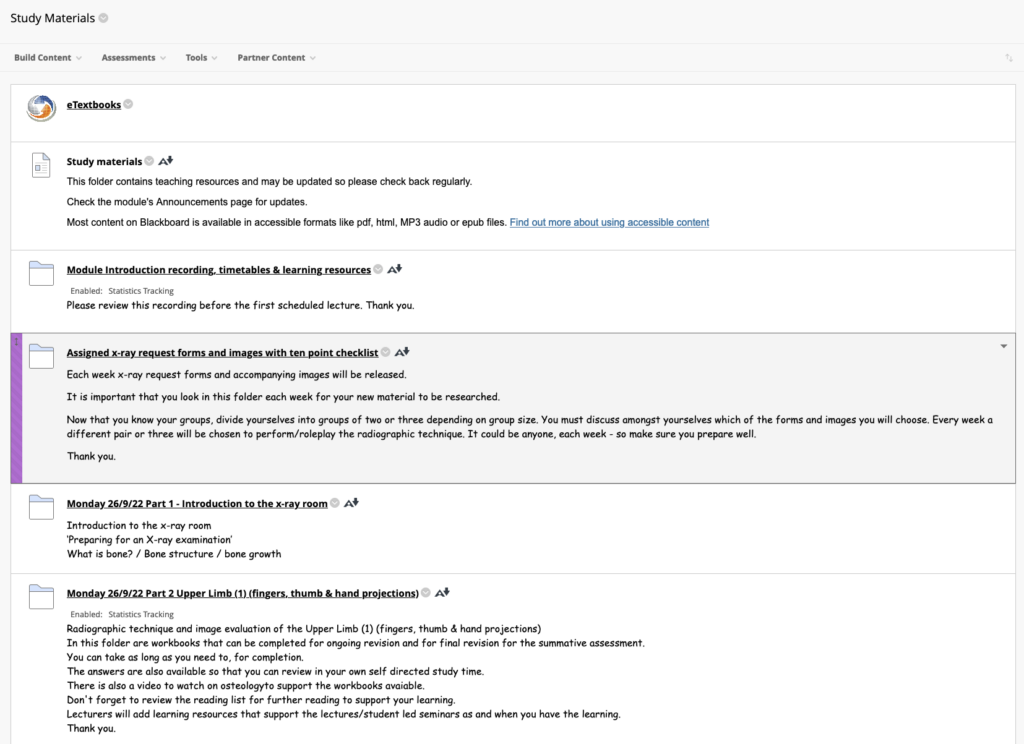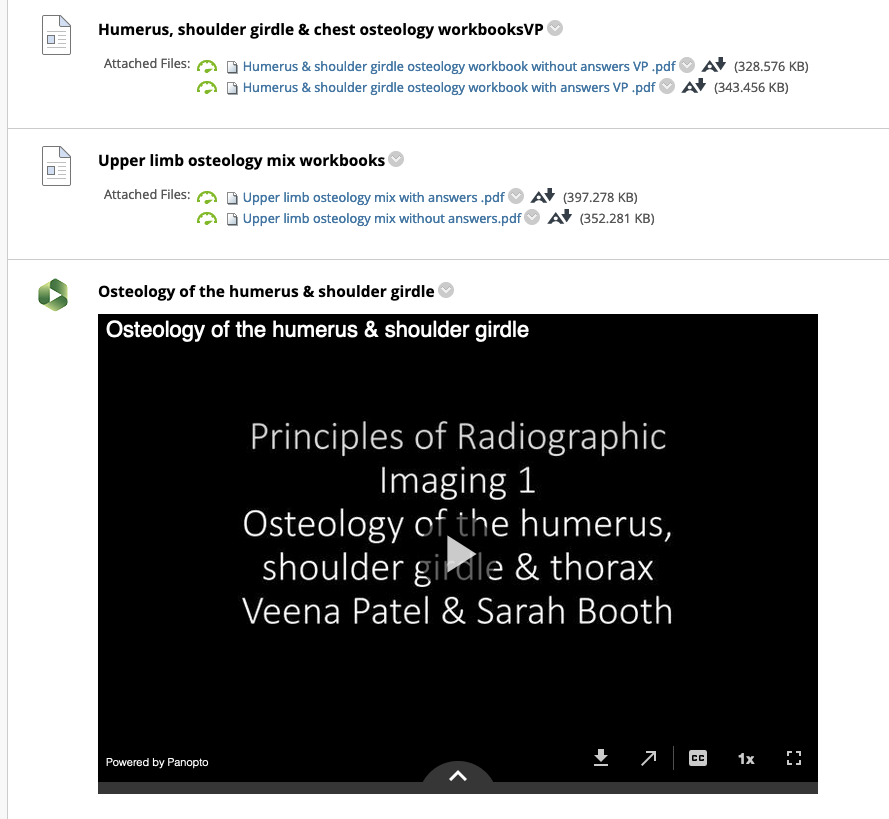By Charlotte Gregory-Ellis (Learning Technologist, Curriculum Development)
As an institution we are committed to using a regular mix of synchronous and asynchronous activities with students. Asynchronous activities can help bridge the gap between synchronous sessions and provide opportunities for students to work independently and collaboratively, developing their knowledge and understanding, and bringing this insight to live activities.
BSc Diagnostic Radiography modules, within the College of Health, Psychology and Social Care, have provided students the opportunity to develop beyond the live synchronous learning with well-laid out asynchronous activities available for students. These are set up in their Study Materials within Blackboard to assist students to be successful in their studies and future employment.

In Image 1 you can see the descriptive text provided to the students under the weekly folder headings, which lets them know what they will be expected to do in the synchronous sessions, what they need to do asynchronously before/after the live session and what is in the folder itself. All this deepens the students’ learning beyond the classroom.

Looking into the folder structure in image 2 the academics have provided the students with clearly labelled pre-session work, with a clear description of what is expected of the students.

Also, in some folders the academic has included short video recordings within the learning to ensure students get the exact learning required, see image 3. This is linked with ‘workbooks’ for them to fill in and have a go at answering questions around the topic being discussed, with the answers being available for them to check their work once completed.
Through feedback, from both students and staff, we know providing a blend of asynchronous and synchronous learning opportunities can:
- Help students to learn both independently and collaboratively within a variety of learning environments.
- Ensure students have flexible and active opportunities to engage with their learning.
- Provide students with the support they value most when they are with you in synchronous sessions.
- Help build relationships between students by encouraging them to collaborate on group tasks outside the synchronous sessions.
- Create a variety of different opportunities for students to engage with their learning content.
I am sure you all may have your own tips and hints to share so feel free to let us know at dls@derby.ac.uk as we can share these across the university community.